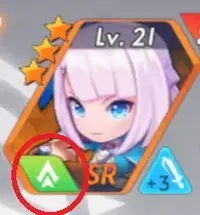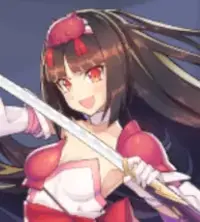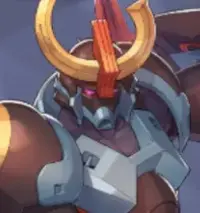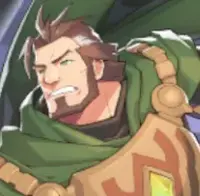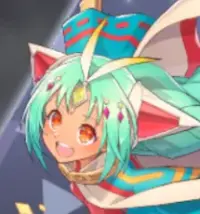Welcome back, commanders, to this tier list for Knightcore: Sword of Kingdom. Here, we’ll be ranking each of the heroes in the game, as well as giving a quick breakdown of each, to help you determine who among Camelot’s noble spirits will be the best fit for your team. Whether you’re here to look for ideas on building a better team or just want confirmation bias (don’t lie, we’ve all been there), I bid you welcome!
A Foreword
A short foreword before we begin.
- Characters will be divided into roles based on the icons located to the lower left of their portraits. There’s no official in-game terminology for these roles, but they serve as a guide to what role that hero is expected to serve. These roles are Fighter (sword), Ranger (double arrows), Tank (shield), Mage (staff), and Healer (cross-shaped staff).
- Characters will be assigned a letter grade based on their performance in their respective type:
- S-tiers are excellent characters all around. There’s no reason to not use them.
- A-tiers are pretty good. They’re not superb, but their reliable and trustworthy performance means that you’ll be bringing them along to almost any fight.
- B-tiers are okay. They’re not terrible, but they could definitely be better.
- C-tiers are bad, either because their kits don’t make sense, take too long to get going, or are too convoluted to be of much practical use.
- D-tiers are meh. Try not to use them unless you’re looking for a challenge.
- This tier list only covers heroes, not units. Units pretty much have the same role of serving as cannon fodder for your heroes.
- Skill numbers (ex: multipliers) are not shown for units you don’t own. Thus, I may misread units as I have no way to look at their exact skill numbers. To minimize this, I’ll try to avoid bringing multipliers into my breakdowns unless I own the unit in question.
- Skill stars are assumed to be at minimum level, to level the playing field.
Finally, this tier list is subjective. It was written with my experience in the game and my biases in mind. Your own opinions can and will very likely vary from mine. If anything, I suggest consulting multiple tier lists and keep your own experience in mind as you figure out who’s worth keeping and who can be relegated to the Forever Bench™.
Now, let’s dive into this Knightcore: Sword of Kingdom tier list!
Fighter Tier List
Fighters can be distinguished by the sword icon in their portrait. These melee combatants possess a modicum of both offense and defense, and it’s this versatility that allows Fighters to easily fit into most compositions.
| A | Geraint, Aoi, Rin, Carlton (Orient) |
| B | Kai, Barrett, Lancelot, Charlotte |
A-Tier
Geraint
Type: STR
Pros:
- Good defensive fighter with AOE.
Cons:
- Mystic is short-ranged.
Geraint is a very vanilla fighter. That’s not a bad thing as I often argue that sheer simplicity and efficiency trump gimmicks every time. In Geraint’s case, her normal attack and auto-skill give her greater survivability while still outputting decent damage while her Violet Lightning is a powerful if short-ranged AOE.
Aoi
Type: STR
Pros:
- Hard-hitting assassin that snipes the weakest foe.
- Dodge and invisibility skill contributes to her survivability.
Cons:
- Requires chain kills and thus good judgment with her Mystic use to maximize her potential.
Aoi is the requisite assassin-type character that games like Knightcore tend to have. While generic, Aoi is committed to her role, and thanks to her class, she can output some decent damage on its own and retreat to the shadows if things get dicey. However, she’s not plug-and-play: Dance of Blossom is undoubtedly a powerful Mystic, but you need to use it in tandem with Redance of Blossom (ergo, the Mystic must score a kill) to maximize Aoi’s potential. Powerful, yes, but you will need practice.
Rin
Type: STR
Pros:
- Ramps up in power considerably, can reach ridiculous levels of raw combat power.
- Passively gains damage over time.
Cons:
- Black Flame caps at a certain number of stacks.
- Dying will set back Lionheart Soul stacks.
Remember when I said simple was effective? This is the exaggerated result of that philosophy. And, surprisingly, it still works. Sometimes all you need is a hammer, which is what Rin offers. No need to fiddle around with skillsets – just smash your foes into a fine red paste!
While Rin is undoubtedly powerful, remind yourself that he still needs space to get going. Ideally, you’ll use Black Flame and Lionheart Soul to generate combat power stacks, then double them with Ambition of Black Lord when the time is right – but remember, double of nothing is still nothing, so take special care of Rin when he’s on the field. He’s powerful, but mortal.
Carlton (Orient)
Type: STR
Pros:
- High survivability thanks to his passive life steal.
- Disables enemies, enables his comrades.
- Buffs allies on death.
Cons:
- Situational bonus damage effect.
- Mystic doesn’t work on large enemies.
This version of Carlton is best described as a “commander” type unit that excels in boosting his comrades. Orient Carlton’s main draw is his ability to set up his allies via his Mystic, Rising Dragon Slash, which immobilizes small and medium enemies and causes all attacks against them to crit.
Mind, this is also his weakness as it does nothing against large-sized enemies. Carlton also brings some of his tank-like survivability in this package, this time via his passive life steal. Finally, should he fall, he’ll inspire allies to hit harder – so don’t be afraid to use him to spearhead attacks!
B-Tier
Kai
Pros:
- Mystic sets up sweeps for your other units.
Cons:
- Not particularly noteworthy outside of his Mystic.
Kai’s one saving grace is his Tiger Strikes Mystic as outside of that, there’s nothing noteworthy about him. A closer look at said Mystic reveals that its multiplier isn’t that high, it procs a low amount of hits, and its range is sad. But…it also slaps foes with a very meaty 35% taken debuff, which I’d argue makes Tiger Strikes worth using all by itself. Your mileage may vary.
Barrett
Pros:
- Sets up life steal for other heroes.
Cons:
- Doesn’t offer much outside of his life steal.
- Very conditional passive.
Like Kai, Barrett is more of a support Fighter. While his own kit is rather lackluster, he does have access to the powerful Blood Mark status which causes attacks on a marked target to have life steal, which is a very nice effect to have. However, it may be more efficient to just run a mage/healer (and ideally someone who can do both) than to slot Barrett into your team.
Lancelot
Pros:
- Vanilla fighter with an easy kit.
- Guaranteed crit on his Mystic makes him great at initiating.
- Can strip buffs.
Cons:
- Needs investment to lower the threshold of his guaranteed crit.
There’s not much to say about Lancelot other than he’s a decent all-around Fighter (which is more than I can say for the Arthurian legends version). Time Slash is a powerful Mystic that deals oodles of damage thanks to its guaranteed crit; it also strips buffs if, for whatever reason, you need that. You will need to invest in Lancelot duplicates to make Time Slash easier to use though, as more star levels lowers the guaranteed crit HP threshold.
Charlotte
Pros:
- More effective on poisoned targets and enables her own gimmicks.
- Last-ditch team support skill on death.
- Charms enemies.
Cons:
- Charm targeting is bad.
Charlotte’s kit has a lot of gimmicks, but overall, she’s quite average. Her normal attacks hit significantly harder (read: guaranteed crit) on poisoned enemies; thankfully, she also packs the Lunar Slash auto-skill that lets her poison enemies. Seductive Kiss sounds great on paper until you realize that it auto-targets the enemy with the lowest HP, making it situational at best and wasted at worst.
If only it targeted the enemy with the highest ATK, then we’d be cooking. Finally, Moon Bunny is a decent passive skill that accelerates Energy gain for a few seconds after Charlotte dies. It’s a nice bonus, but try not to get her killed in the first place.
Ranger Tier List
Rangers are distinguished by the double-arrow on the lower left of their portrait. These units excel at peppering foes from a distance. While powerful, they often require backup from hardier allies as Rangers don’t usually have much survivability on their own.
| S | Queen Pella |
| A | Alfie |
| B | Pearl, Kurin, Kallian |
S-Tier
Queen Pella
Type: AGI
Pros:
- Chaining, stunning normal attack.
- Summons a clone for more normal attack shenanigans.
- Gives allies Mystic energy with her own Mystic.
Unlike other Rangers, Queen Pella is reliant on her normal attacks (throwing cats) to do damage. Silly? Yes. But it is effective, as her normal attack chains, allowing her to output a surprising amount of damage. But that’s not all – there’s also a chance for Queen Pella’s cats to stun on hit, giving her some CC utility.
On top of that, her Shadow Queen skill allows her to clone herself for more normal attacks, though do note that her clones only have access to her normal attack.
Finally, Might of Queen is a powerful AOE that does no damage on its own but instead heals and gives Mystic energy to all allies within range. You could make the argument that Queen Pella is a support, and I’d agree – but she’s a Ranger according to the game, and one of the better ones, too.
A-Tier
Alfie
Type: AGI
Pros:
- Packs both AOE and single-target damage.
- Normal attacks are AOE.
- Has an AOE stun.
Cons:
- Lower range than other Rangers on his Mystic.
Alfie is a versatile unit that can fulfill multiple combat roles. Grenade skill is undoubtedly nice as it’s a lingering (if minor) AOE – the caveat being you can’t control it as it isn’t his Mystic.
B-Tier
Pearl
Type: AGI
Pros:
- Versatile skillset.
- Gets stronger with each kill.
Cons:
- Versatility often comes at the cost of raw power.
- Needs to not only survive but land kills to ramp up and buffs from doing so are relatively minor.
On one hand, silver-haired knight waifu. On the other, not too great a unit. Pearl is just sort of there without excelling in any particular field. Great if you get her early and need to fill a niche, but as you play more, you’ll find heroes who can do a better job than Pearl.
Kurin
Type: AGI
Pros:
- Goo Goo Beam is funny.
Cons:
- Buff striff on Goo Goo Beam is superfluous; it’s easier to just kill enemies and there are better units at doing that.
Kurin’s main draw (at least for me) is her Goo Goo Beam Mystic, which turns enemies into chickens for 4 seconds and strips their buffs. While amusing, you’re often pressed for time when clearing content in Knightcore, and oftentimes, you’ll find that it’s simpler – not to mention more effective – to just spam AOEs on enemies rather than using gimmicks on them.
Kallian
Type: AGI
Pros:
- Good utility on her skills.
- Pseudo AOE.
Cons:
- Needs multiple copies to bring out her full supportive potential.
- As a DPS unit, she’s more prone to positioning-based shenanigans.
Kallian brings a little bit of everything. Her Pillar of Forest normal attack reduces enemy movement speed (which isn’t that important if you’re running a proper Ranger – Fighter/Tank formation), Eagle Arrow does decent damage but fires strictly in a straight line (and it hurts that you can’t time this). Pillar of Fairy somewhat alleviates this as it allows Kallian to summon a turret that fires off Eagle Arrows, though once again, you’re not targeting these. Finally, Ancestral Pillar causes allies to periodically heal for small amounts of HP. While tiny, this is free, non-targeted healing, which can be nice. All in all, not too shabby a kit!
Tank Tier List
Tanks are sturdy frontliners identifiable by a shield icon on their portrait. They’re usually hard to kill and are very disruptive, at the cost of their personal offense. While tanks will rarely take foes down on their own, they nonetheless serve an important niche as they server as walls for your squishier damage dealers.
| S | Van (Bangkok) |
| A | Carlton, Gawain, Morgause |
| C | Great Elder |
| D | Shark, Marcus |
S-Tier
Van (Bangkok)
Type: MAG
Pros:
- Has a hard taunt + silence.
- Passive incoming damage reduction.
- Good emergency Mystic for shutting down strong enemies.
Cons:
- No on-demand taunt.
There’s a temptation among game devs nowadays to stretch character roles – tanks that have weird gimmicks, supports that work as DPS, and so on. So it’s a rare treat to find an actual honest-to-goodness tank that just offers great defensive utility. That’s what you get in Bangkok Van.
A hard taunt is already a big plus in my book, but she goes the distance and adds a silence on top of that taunt, which greatly helps in both survivability and disruption. Her Buddha Punishment mystic is a good emergency pop that reduces both ATK and attack speed, making Van a quick and easy counter for hard-hitting foes.
About the only thing I can complain about is that Baron Challenge is an auto-skill, meaning you’ll have less control over when and where Van pops it.
A-Tier
Carlton
Type: STR
Pros:
- Has a hard taunt.
- Passive incoming damage reduction.
Cons:
- No on-demand taunt.
- Needs investment to unlock his skills.
New players are (almost?) guaranteed to get Carlton among their rolls, and while you may be tempted to fall into the trap of thinking that a low-rarity tank will quickly be replaced, you may be happy to find out that you’re wrong. 30% damage reduction is very respectable for a 1-star skill, and that only gets better as you sink more resources into Carlton.
Carlton also has the distinction of having a hard 5-second taunt via his War Declaration though do note that this isn’t his Mystic so you’ll need to get used to it. While he admittedly does need some duplicates to unlock his full arsenal, Carlton is a formidable tank who’ll serve you well at any stage of the game.
Gawain
Type: STR
Pros:
- Has a hard taunt in his Mystic.
- Mystic gives regeneration.
- Passive incoming damage reduction.
Cons:
- Needs investment to unlock his skills.
Gawain is another low-rarity but very effective tank. Like Carlton, Gawain needs duplicates to unlock his skills. Where Carlton and Gawain differ are their taunt mechanics. Carlton’s taunt procs every 7 normal attacks, meaning that he’ll be more disruptive at the cost of you not being able to decide when and where he taunts.
Gawain, on the other hand, has taunt + regen on his Mystic, but it requires 20 hits to fully charge. It’s up to you whether you need Carlton to be disruptive or Gawain to time and tank big hits from powerful mobs. Both are good choices.
And, like Carlton, Gawain has a passive -30% incoming damage reduction, which is fantastic.
Morgause
Type: STR
Pros:
- Wards and counters, allowing him to output respectable amounts of damage.
Cons:
- Needs investment to unlock his skills.
Between Carlton, Gawain, and Morgause, you’re spoiled for choice in the “easy to build but effective” tank category.
Morgause distinguishes himself with a more offensive spin on defense over his A-tier peers. Like the two before him, Morgause offers great defensive utility, this time via a large warding effect that redirects damage to him. Completing this kit is not only the standard -30% incoming damage reduction that tanks have but also his Parry Current Mystic, which allows Morgause to counter hits for its duration, which synchronizes perfectly with his warding skill.
C-Tier
Great Elder
Type: MAG
Pros:
- Gets stronger the longer he survives.
Cons:
- Lower damage reduction than other tanks, not suitable for defensive purposes.
Sometimes games label the roles of their characters weirdly, leading to placings such as this one. Great Elder is nominally a tank hero, though his kit makes him better as a Fighter. With a long-lasting combat power buff in Charging Body, the idea behind Great Elder is to use his innate bulk to take hits and punish enemies for allowing him to survive.
A sound strategy, but note that apart from a 10% incoming damage reduction passive, Great Elder has nothing that helps him survive longer and thus doesn’t offer as much defensive utility as other tanks.
D-Tier
Shark
Type: AGI
Pros:
- Has healing reduction, I guess?
Cons:
- Offers no defensive utility, kit is better for a fighter.
Like Great Elder, Shark has the dubious role of tank. Shark is a character with a kit that’s wildly out of place for his combat role – all his skills are offensive in nature, including an execution-type skill that procs a guaranteed crit on enemies below 20% HP. And no, Shark offers zero defensive utility. He doesn’t even reduce incoming damage, instead reflecting 5% of damage taken.
Do note that while Shark scores low as a tank, he does have potential as an offensive unit. If you’re looking for someone who offers raw defensive utility though, pass.
Marcus
Type: STR
Pros:
- Has AOEs.
Cons:
- No defensive utility outside of damage reduction.
Like Shark and Great Elder, Marcus strains to define what makes a tank. Apart from incoming damage reduction, Marcus has no defensive utility. But while both Shark and Great Elder do have kits that make sense (if you ignore the fact that they’re supposed to be tanks), Marcus is in a weird spot. His kit gives him access to some AOEs and DoTs that target the enemy with the least health. You really should be leaving the AOE sweeping to somebody else.
Mage Tier List
Mages are powerful mob sweepers identifiable via the staff icon on their portrait. These casters are varied, with AOE damage, debuffs, and other effects.
| S | Kurin (Halloween), Raici (Christmas) |
| A | Parfait |
| B | Ganis, Dark Pearl |
| C | Uluru King |
S-Tier
Kurin (Halloween)
Type: MAG
Pros:
- Normal attacks can immobilize.
- Constant stunning AOE.
- Disables the strongest enemy on the field.
Most mages have to choose between AOE and utility. Halloween Kurin refuses to follow those rules, with her Monster Pumpkin serving as a consistent, disruptive AOE. This is also her auto-skill, meaning that given time (and ASPD boosts if you have them), Kurin will constantly disables foes with her AOE stuns, leaving them easy pickings both for herself and her allies.
AOE isn’t the only thing Kurin can do. Mischief Mutation allows Kurin to serve as a hard disabler as it automatically targets the foe with the highest ATK, turning them into a harmless bat for a short amount of time. While not as fantastic as the pumpkin spam, a hard shutdown on dangerous enemies is always useful.
Raici (Christmas)
Type: MAG
Pros:
- Heals, buffs.
- Also gives Mystic energy.
Not much to see here, just truckloads of healing for both Raici and the rest of your team. Raici has access to two heals – the Gift Therapy auto-skill heals allies in a big AOE and gives them a random buff (with star investment, you get a bigger pool of buffs) while Magic Gift heals allies and gives them Mystic energy. Simple, but effective.
A-Tier
Parfait
Type: MAG
Pros:
- Passively summons skeletons whenever an enemy dies.
- Decent AOE Mystic.
Parfait’s main asset is her passive, which causes her to summon skeletons every time an enemy dies. While the skeletons aren’t the hardiest of units, the fact that they’re easy to proc and serve as useful meat shields for the rest of your forces makes Parfait handy to have.
Oh, and Death Scream is a useful AOE too. I’m not entirely sure how the damage bonus works (again, Knightcore really could use a clean-up with its formatting), but I -think- it gets stronger the more of your units are near it. If that’s the case, Parfait’s skeletons synergize perfectly with her Mystic.
B-Tier
Ganis
Type: MAG
Pros:
- Very low CD on his auto-skill.
- Mystic reduces MSPD and ASPD.
Ganis looks very vanilla. He performs very vanilla, too, with what’s essentially two AOEs in his arsenal. The first is a chaining attack that bounces 5 times (though note that damage is reduced each bounce) – do note its very low cooldown of just 3 attacks. The second is his Mystic, a persistent Blizzard that also reduces MSPD and ASPD inside of its AOE. This allows Ganis to serve not only as an AOE sweeper but also a disabler as the penalties within the blizzard are quite hefty.
Dark Pearl
Type: MAG
Pros:
- Good ramping effect.
- Fast auto-skill helps with her DPS.
- Auto-skill increases damage enemies take (requires investment).
Cons:
- Reliant on her marks to deal damage.
- Virtually no AOE.
Dark Pearl may be touted as a mage, but she’s very close to her regular form. While Dark Pearl is more than capable of high single-target damage thanks to her good auto attacks and auto-skill, her Soul-Seeking Magic Arrow is difficult to maximize as (I believe, again, the text descriptions are lacking) it only targets enemies she’s already marked with her normal attacks. Finally, Dark Pearl also has a ramping effect like her vanilla version; as with normal Pearl, try to keep Dark Pearl alive and help her land kills to maximize her potential.
C-Tier
Uluru King
Type: MAG
Pros:
- AOE stun.
Cons:
- Much smaller AOE compared to other mages.
Uluru King doesn’t have much going on. His normal attacks inflict a DoT, he can summon a tower that attacks (not unlike Kallian) and his ultimate is a stun (which is good) but has a smaller AOE. You can use him if you really need a stunner, though I think it’s a better idea to just use an AOE nuke Mystic.
Healer Tier List
Healers are identifiable via the cross-shaped staff icon on their portrait. When it comes to keeping your party alive, nobody does it better than a healer.
| S | Raici, Alys |
| A | Bedivere |
| B | Moni |
S-Tier
Raici
Type: MAG
Pros:
- Regen-type mass heal.
- Cleanses debuffs and immunizes allies against them.
- Heals allies on death.
Cons:
- Tiny AOE on Mystica and auto-skill.
Raici tops most tier lists for Knightcore for a good reason. With a regen-type heal via Spirit Flow (which I would argue is better as it runs less risk of overhealing) and mass debuff removal/heal/immunization via Cleansing Dew, the only thing you need to watch out for is the small AOEs on Raici’s skills.
As with any other healer not named Alys, you’ll need a little bit of practice with Raici’s Mystic to get the most mileage out of it.
Alys
Type: AGI
Pros:
- Heals.
- Giant AOE heal on Mystic.
- Cleanses debuffs with investment.
“Heals.” That’s it. Alys is one of the few units dedicated to keeping your guys alive, which makes her indispensable. Holy Healing is an auto-targeted heal that will keep the unit with the lowest HP alive a bit longer, while Rain of Favor is an AOE heal that also removes debuffs given enough star levels.
Simple, yes, but very good, so much so that she serves as the standard for judging every other healer’s kit.
A-Tier
Bedivere
Type: AGI
Pros:
- Heals and reduces damage taken.
- Passive damage reduction applies to team.
Cons:
- Tiny AOE on Mystic.
Bedivere is a good healer, don’t get me wrong. Like Alys, Sacred Cure lets Bedivere keep the most vulnerable teammate alive, while Fruit of Sacred Tree is a big defensive swing as it not only heals allies but also grants them a large incoming damage reduction buff. Did I mention Bedivere’s passive also reduces incoming damage to his team?
On the other hand, Fruit of Sacred Tree’s AOE is tiny. Like Moni (see below), you’ll need to practice and decide whether you want to run the risk of hitting less allies with a heal + buff or just use a consistent healer like Alys.
B-Tier
Moni
Type: STR
Pros:
- Heals and shields allies.
- Can blind enemies.
Cons:
- Tiny AOE on Mystic.
Moni would be higher on this list if his AOE wasn’t so damn small. Shielding is a good effect, don’t get me wrong, but the small AOE on Mana Shield makes it difficult to apply it to multiple allies – not to mention that said Mystic is also Moni’s source of healing. Still, you take what you can get with healers, and sometimes it’s better to proactively shield your characters against incoming damage than mopping up after a hit. It’s up to you whether you want to practice with Moni or use more reliable healers like Alys.
Play Who You Want to Play
And that concludes my tier list. But let me reiterate myself – at the end of the day, the most important thing in any gacha game is that you’re having fun. If you want to make meme teams or just want to play with your favorites, go right ahead!

